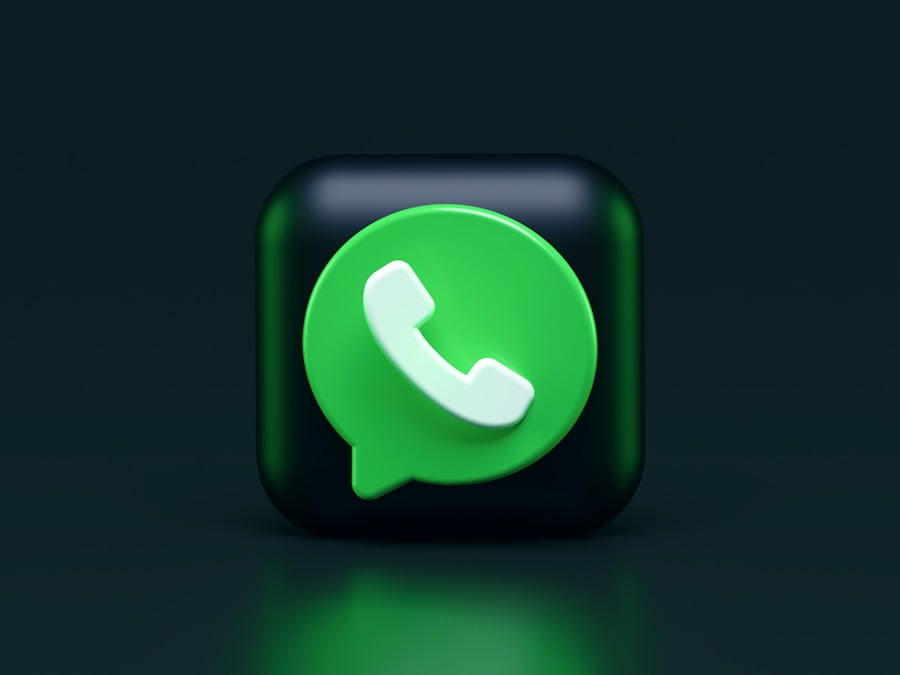YouTube monetization has become a crucial aspect for content creators who want to turn their passion into a profitable career. With over 2 billion monthly active users, YouTube offers a massive audience for creators to showcase their talent and earn money through advertising and other monetization options.
YouTube monetization works by allowing creators to earn revenue from ads that are displayed on their videos. When a viewer watches an ad on a creator’s video, the creator receives a portion of the ad revenue generated. This revenue is based on factors such as the number of views, engagement, and the advertiser’s bid for that particular ad placement.
The Basics: How to Set Up Your Channel for Monetization
To enable monetization on your YouTube channel, you need to meet certain requirements set by YouTube. First, you need to have at least 1,000 subscribers on your channel. This shows that you have a dedicated audience who are interested in your content. Second, you need to have accumulated 4,000 watch hours on your channel within the past 12 months. This ensures that you have consistently produced content that engages viewers.
Once you meet these requirements, you can enable monetization by following these steps:
1. Sign in to your YouTube account and go to YouTube Studio.
2. Click on “Monetization” in the left-hand menu.
3. Follow the instructions to set up an AdSense account or link an existing one.
4. Review and accept the terms of the YouTube Partner Program.
5. Set your monetization preferences, such as ad formats and placements.
Creating Content that Attracts Viewers and Advertisers
To attract viewers and advertisers, it is essential to create engaging and high-quality content that resonates with your target audience. Here are some tips for creating content that appeals to both viewers and advertisers:
1. Understand your target audience: Research your audience’s demographics, interests, and preferences. This will help you create content that caters to their specific needs and interests.
2. Provide value: Create content that educates, entertains, or inspires your audience. Offer unique insights, practical tips, or entertaining stories that keep viewers coming back for more.
3. Maintain consistency: Consistency is key to building a loyal audience. Stick to a regular upload schedule and deliver content that aligns with your brand and audience expectations.
4. Optimize for search: Use relevant keywords in your video titles, descriptions, and tags to improve your video’s visibility in search results. This will help attract more viewers and increase your chances of monetization.
YouTube Partner Program: Eligibility and Requirements
The YouTube Partner Program (YPP) is a program that allows creators to monetize their content and access additional features and resources. To be eligible for the YPP, you need to meet the following requirements:
1. Follow YouTube’s community guidelines: Ensure that your content complies with YouTube’s policies regarding copyright infringement, hate speech, violence, and other prohibited content.
2. Adhere to copyright policies: Avoid using copyrighted material without permission or proper attribution. Use royalty-free music and obtain licenses for any copyrighted material you include in your videos.
3. Maintain a good standing on YouTube: Avoid any violations or strikes on your channel that could result in the suspension of monetization privileges.
Once you meet these requirements, you can apply for the YPP through the YouTube Studio dashboard. YouTube will review your channel to ensure it meets their guidelines before granting monetization privileges.
Ad Formats: Understanding Your Monetization Options
YouTube offers various ad formats that creators can utilize to monetize their content. These ad formats include pre-roll ads, display ads, and sponsored content.
1. Pre-roll ads: These are ads that play before a viewer’s chosen video. They can be skippable or non-skippable, and creators earn revenue when viewers watch or interact with these ads.
2. Display ads: These are ads that appear as banners or overlays on a video while it is playing. Creators earn revenue when viewers click on these ads or when they are displayed for a certain duration.
3. Sponsored content: This involves collaborating with brands or advertisers to create content that promotes their products or services. Creators can earn revenue through brand partnerships, product placements, or affiliate marketing.
To optimize your ad revenue, it is important to experiment with different ad formats and placements to find what works best for your audience and content.
Maximizing Revenue: Tips for Increasing Your Earnings
While ad revenue is a significant part of YouTube monetization, there are other strategies you can employ to increase your earnings and maximize your revenue potential.
1. Optimize ad placement: Experiment with different ad placements within your videos to find the most effective positions that generate the highest click-through rates and engagement.
2. Target high-paying keywords: Research and incorporate high-paying keywords into your video titles, descriptions, and tags. This can attract advertisers who are willing to bid more for those keywords, resulting in higher ad revenue.
3. Diversify revenue streams: Explore alternative monetization options such as merchandise sales, crowdfunding, memberships, or sponsored content. This can help reduce reliance on ad revenue alone and provide additional income streams.
4. Build a loyal audience: Focus on building a loyal and engaged audience by interacting with your viewers through comments, live chats, and social media. A dedicated fan base is more likely to support you through donations, merchandise purchases, or other forms of financial support.
Sponsored Content: How to Work with Brands and Advertisers
Sponsored content can be a lucrative monetization option for content creators as it allows them to collaborate with brands and advertisers. Here are some tips for finding and working with brands:
1. Define your niche: Identify your niche and target audience to attract brands that align with your content and values. This will help ensure that sponsored content feels authentic and resonates with your audience.
2. Reach out to brands: Research brands that are relevant to your niche and reach out to them with a well-crafted pitch. Highlight the value you can provide to their brand and how your audience can benefit from the partnership.
3. Negotiate rates: When negotiating rates, consider factors such as your audience size, engagement metrics, and the scope of the partnership. Be prepared to negotiate and find a mutually beneficial agreement.
4. Maintain authenticity: It is important to maintain authenticity when creating sponsored content. Be transparent with your audience about the partnership and ensure that the content aligns with your usual style and tone.
Merchandising: Selling Products and Services on Your Channel
Merchandising is another profitable monetization option for content creators. By selling products or services related to your brand, you can generate additional income while strengthening your connection with your audience. Here are some tips for successful merchandising:
1. Create unique merchandise: Design merchandise that reflects your brand identity and resonates with your audience. Consider creating items such as t-shirts, hats, stickers, or digital products like e-books or online courses.
2. Promote your merchandise: Use your videos, social media platforms, and website to promote your merchandise. Showcase the products in a visually appealing way and highlight their benefits to encourage purchases.
3. Offer exclusive perks: Provide exclusive perks or discounts to your loyal subscribers or members as a way to incentivize them to purchase your merchandise.
4. Partner with fulfillment services: If managing inventory and shipping becomes overwhelming, consider partnering with fulfillment services that can handle these aspects for you.
Analytics: Measuring and Analyzing Your Monetization Performance
YouTube provides creators with robust analytics tools to track their monetization performance and gain insights into their audience’s behavior. Here are some key metrics to monitor:
1. Revenue: Track your ad revenue over time to understand how your monetization efforts are performing. Identify trends and patterns to optimize your revenue generation strategies.
2. Engagement: Monitor metrics such as watch time, likes, comments, and shares to gauge how well your content is resonating with your audience. Use this data to create more engaging content that keeps viewers coming back.
3. Audience demographics: Understand the demographics of your audience, including their age, gender, location, and interests. This information can help you tailor your content and monetization strategies to better serve your audience.
4. Traffic sources: Analyze where your viewers are coming from, whether it’s through YouTube search, external websites, or social media platforms. This can help you identify which channels are driving the most traffic and optimize your promotional efforts.
Copyright and Fair Use: Avoiding Legal Issues and Penalties
Understanding copyright laws and fair use policies is crucial for content creators to avoid legal issues and penalties on YouTube. Here are some tips to stay compliant:
1. Use royalty-free music: Avoid using copyrighted music without permission or proper licensing. Instead, use royalty-free music libraries or seek permission from the copyright holder.
2. Obtain permission for copyrighted material: If you want to include copyrighted material in your videos, such as clips from movies or TV shows, obtain permission from the copyright holder or consider using content under fair use guidelines.
3. Give proper attribution: If you use copyrighted material under fair use guidelines, make sure to provide proper attribution in your video description or credits.
4. Familiarize yourself with YouTube’s copyright policies: Stay up-to-date with YouTube’s copyright policies and guidelines to ensure that your content complies with their rules.
Putting It All Together for YouTube Monetization Success
In conclusion, YouTube monetization offers content creators the opportunity to turn their passion into a profitable career. By creating engaging and high-quality content, meeting the requirements for the YouTube Partner Program, and exploring different monetization options, creators can maximize their revenue potential.
It is important to continually experiment, learn, and adapt to the ever-changing landscape of YouTube monetization. By understanding your audience, analyzing your performance through analytics, and staying compliant with copyright laws and fair use policies, you can achieve long-term success on YouTube. Remember to stay authentic to your brand and audience, and never stop exploring new ways to monetize your content.







































0 Comments